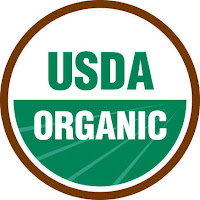 When I first started eliminating dairy and eggs from my diet, I was leery of recipes claiming to have all the answers for acceptable substitutes, especially when it came to eggs and cheese. Through my experience, I have come to realize that there are many fantastic ways to get the flavor and texture you're seeking without compromising your dietary choices or lifestyle.
When I first started eliminating dairy and eggs from my diet, I was leery of recipes claiming to have all the answers for acceptable substitutes, especially when it came to eggs and cheese. Through my experience, I have come to realize that there are many fantastic ways to get the flavor and texture you're seeking without compromising your dietary choices or lifestyle. I came across this recipe that was created by Allison Rivers Samson (owner of an award-winning artisan bakery and confectionary boutique, offering delectable organic, vegan sweets) in the June 2010 issue of VegNews magazine.
While gathering the ingredients for this recipe I was introduced to kala namak, a necessary ingredient for imparting the "egg flavor" in the dish. As a matter of fact, I practically became obsessed with the stuff. Kala namak is an Indian black sea salt that is pinkish gray in color and imparts a sulfuric taste similar to eggs...Seriously....It tastes EXACTLY like hard-boiled eggs. You can sprinkle it over your morning tofu scramble, or use it wherever you want a little egg flavor...But be careful, it's potent stuff!
The garbanzo & fava bean flour is what gives the dish an eggy texture, and also supplements as a great source of protein with 6 grams in every 1/4th cup. When preparing, you may find that the flour mixture may get a bit lumpy. After the cooking process was complete, I poured the mixture into a large mixing bowl and ran my hand-mixer through it for about four minutes. I still had a few lumps, but it didn't make a difference in flavor or texture when the dish was finished.
I also went a step further and added 1/2 cup of Daiya vegan mozzarella to give the frittata a more decadent finish, because who doesn't like decadence?
The recipe calls for broccoli and onions, but if you'd like, you can mix it up and add or replace with your other favorite veggies. Next time I think I'll try mushroom and spinach, or roasted red pepper and shallot...The combinations are endless!
Have it for dinner with a salad...

Or have it for breakfast with fresh fruit...

Eat healthy, stay happy!
~j
Italian Frittata
Serves 6
4 cups water
2 tsp salt
1 1/2 cups garbanzo fava bean flour
1/4 cup non-hydrogenated margarine (such as Earth Balance)
1 cup onion, quartered and cut into thin slices
1/2 tsp dried basil
1/2 tsp dried marjoram
2 cups broccoli florets cut into small bite-sized pieces
1/4 tsp kala namak
1/2 cup Daiya vegan mozzarella (optional)
Oil a 9-inch tart pan. In a medium saucepan over medium heat, add water and salt. Gently whisk in the garbanzo bean flour to combine completely. Whisk occasionally as the mixture begins to boil to prevent it from sticking to the bottom of the pan. As it begins to thicken, reduce heat to low and cook uncovered for 20 minutes, stirring occasionally.
Meanwhile, place a saute pan over low-medium heat and add margarine and onions. Saute for 5 minutes, then add basil and marjoram and cook for another 5 minutes. Add broccoli and cook for an additional 5 minutes. Turn off heat.
In a large bowl, combine cooked garbanzo bean mixture , vegetable, kala namak, and vegan cheese (if using), until well mixed. Spread evenly into oiled dish. Cool completely in the refrigerator for two hours. (This step imparts the egg-like texture, so don't skip it!)
Preheat the oven to 350 degrees, then bake the frittata for 20 minutes, or until hot in the center. Move the frittata up to the top rack, turn on broiler, and broil 3-5 minutes, until the top has browned. Serve warm with your favorite side dishes.
(This dish also reheats well in the microwave!)



